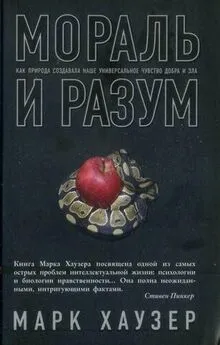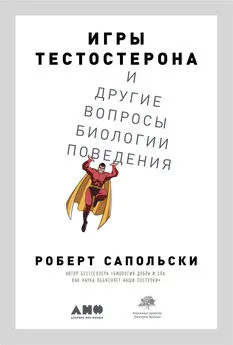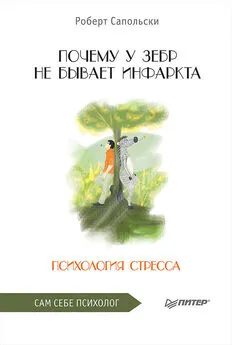Роберт Сапольски - Биология добра и зла. Как наука объясняет наши поступки
- Название:Биология добра и зла. Как наука объясняет наши поступки
- Автор:
- Жанр:
- Издательство:Альпина нон-фикшн
- Год:2019
- Город:Москва
- ISBN:978-5-0013-9051-0
- Рейтинг:
- Избранное:Добавить в избранное
-
Отзывы:
-
Ваша оценка:
Роберт Сапольски - Биология добра и зла. Как наука объясняет наши поступки краткое содержание
Биология добра и зла. Как наука объясняет наши поступки - читать онлайн бесплатно ознакомительный отрывок
Интервал:
Закладка:
419
R. Simon and H. Alstein, Adoption, Race and Identity: From Infancy to Young Adulthood (New Brunswick, NJ: Transaction Publishers, 2002); Child Welfare League of America, Standards of Excellence: Standards of Excellence for Adoption Services , rev. ed. (Washington, DC: Child Welfare League of America, 2000); M. Bohman, Adopted Children and Their Families: A Follow-up Study of Adopted Children, Their Background, Environment and Adjustment (Stockholm: Proprius, 1970).
420
L. J. Kamin and A. S. Goldberger, “Twin Studies in Behavioral Research: A Skeptical View,” Theoretical Population Biol 61 (2002): 83.
421
M. Stoolmiller, “Correcting Estimates of Shared Environmental Variance for Range Restriction in Adoption Studies Using a Truncated Multivariate Normal Model,” Behav Gen 28 (1998) 429; M. Stoolmiller, “Implications of Restricted Range of Family Environments for Estimates of Heritability and Nonshared Environment in Behavior-Genetic Adoption Studies,” Psych Bull 125 (1999): 392; M. McGue et al., “The Environments of Adopted and Non-adopted Youth: Evidence on Range Restriction from the Sibling Interaction and Behavior Study (SIBS),” Behav Gen 37 (2007): 449.
422
R. Ebstein et al., “Genetics of Human Social Behavior,” Neuron 65 (2008): 831.
423
Этот пример взят у N. Block, “How Heritability Misleads About Race,” Cog 56 (1995): 99–128.
424
D. Moore, The Dependent Gene: The Fallacy of “Nature Versus Nurture” (NY: Holt, 2001); M. Ridley, Nature via Nurture (New York: HarperCollins, 2003); A. Tenesa and C. Haley, “The Heritability of Human Disease: Estimation, Uses and Abuses,” Nat Rev Genetics 14 (2013): 139; P. Schonemann, “On Models and Muddles of Heritability,” Genetica 99 (1997): 97.
425
T. Bouchard and M. McGue, “Genetic and Environmental Influences on Human Psychological Differences,” J Neurobiol 54 (2003): 4.
426
L. E. Duncan and M. C. Keller, “A Critical Review of the First 10 Years of Candidate Gene-by-Environment Interaction Research in Psychiatry,” Am J Psychiatry 168 (2011): 1041; S. Manuck and J. McCaffery, “Gene-Environment Interaction,” Ann Rev of Psych 65 (2014): 41.
427
A. Caspi et al., “Influence of Life Stress on Depression: Moderation by a Polymorphism in the 5-HTT Gene,” Sci 297 (2002): 851.
428
A. Caspi et al., “Moderation of Breastfeeding Effects on the IQ by Genetic Variation in Fatty Acid Metabolism,” PNAS 104 (2007): 18860; B. K. Lipska and D. R. Weinberger, “Genetic Variation in Vulnerability to the Behavioral Effects of Neonatal Hippocampal Damage in Rats,” PNAS 92 (1995): 8906.
429
J. Crabbe et al., “Genetics of Mouse Behavior: Interactions with Laboratory Environment,” Sci 284 (1999): 1670.
430
Отличный пример двойного воздействия окружающей среды: N. P. Daskalakis et al., “The Three-Hit Concept of Vulnerability and Resilience: Toward Understanding Adaptation to Early-Life Adversity Outcome,” PNE 38 (2013): 1858.
431
E. Turkheimer et al., “Socioeconomic Status Modifies Heritability of IQ in Young Children,” Psych Sci 14 (2003): 623; E. M. Tucker-Drob et al., “Emergence of a Gene × Socioeconomic Status Interaction on Infant Mental Ability Between 10 Months and 2 Years,” Psych Sci 22 (2010): 125; M. Rhemtulla and E. M. Tucker-Drob, “Gene-by-Socioeconomic Status Interaction on School Readiness,” Behav Genetics 42 (2012): 549; D. Reiss et al., “How Genes and the Social Environment Moderate Each Other,” Am J Public Health 103 (2013): S111; S. A. Hart et al., “Expanding the Environment: Gene × School-Level SES Interaction on Reading Comprehension,” J Child Psych and Psychiatry 54 (2013): 1047; J. R. Koopmans et al., “The Influence of Religion on Alcohol Use Initiation: Evidence for Genotype × Environment Interaction,” Behav Genetics 29 (1999): 445.
432
S. Nielsen et al., “Prevalence of Alcohol Problems Among Adult Somatic Inpatients of a Copenhagen Hospital,” Alcohol and Alcoholism 29 (1994): 583; S. Manuck et al., “Aggression and Anger-Related Traits Associated with a Polymorphism of the Tryptophan Hydroxylase Gene,” BP 45 (1999): 603; J. Hennig et al., “Two Types of Aggression Are Differentially Related to Serotonergic Activity and the A779C TPH Polymorphism,” Behav Nsci 119 (2005): 16; A. Strobel et al., “Allelic Variation in 5-HT1A Receptor Expression Is Associated with Anxiety- and Depression-Related Personality Traits,” J Neural Transmission 110 (2003): 1445; R. Parsey et al., “Effects of Sex, Age, and Aggressive Traits in Man on Brain Serotonin 5-HT1A Receptor Binding Potential Measured by PET Using [C-11] WAY-100635,” Brain Res 954 (2002): 173; A. Benko et al., “Significant Association Between the C(-1019)G Functional Polymorphism of the HTR1A Gene and Impulsivity,” Am J Med Genetics, Part B, Neuropsychiatric Genetics 153 (2010): 592, M. Soyka et al., “Association of 5-HT1B Receptor Gene and Antisocial Behavior and Alcoholism,” J Neural Transmission 111 (2004): 101; L. Bevilacqua et al., “A Population-Specific HTR2B Stop Codon Predisposes to Severe Impulsivity,” Nat 468 (2010): 1061; C. A. Ficks and I. D. Waldman, “Candidate Genes for Aggression and Antisocial Behavior: A Meta-analysis of Association Studies of the 5HTTLPR and MAOA-uVNTR,” Behav Genetics 44 (2014): 427; I. Craig and K. Halton, “Genetics of Human Aggressive Behavior,” Hum Genetics 126 (2009): 101.
433
H. Brunner et al., “Abnormal Behavior Associated with a Point Mutation in the Structural Gene for Monoamine Oxidase A,” Sci 262 (1993): 578; H. G. Brunner et al., “X-linkhed Borderline Mental Retardation with Prominent Behavioral Disturbance: Phenotype, Genetic Localization, and Evidence for Disturbed Monoamine Metabolism,” Am J Hum Genetics 52 (1993): 1032.
434
O. Cases et al., “Aggressive Behavior and Altered Amounts of Brain Serotonin and Norepinephrine in Mice Lacking MAOA,” Sci 268 (1995): 1763; J. J. Kim et al., “Selective Enhancement of Emotional, but Not Motor, Learning in Monoamine Oxidase A – Deficient Mice,” PNAS 94 (1997): 5929.
435
J. Buckholtz and A. Meyer-Lindenberg, “MAOA and the Neurogenetic Architecture of Human Aggression,” TINS 31 (2008): 120; A. Meyer-Lindenberg et al., “Neural Mechanisms of Genetic Risk for Impulsivity and Violence in Humans,” PNAS 103 (2006): 6269; J. Fan et al., “Mapping the Genetic Variation of Executive Attention onto Brain Activity,” PNAS 100 (2003): 7406; L. Passamonti et al., “Monoamine Oxidase-A Genetic Variations Influence Brain Activity Associated with Inhibitory Control: New Insight into the Neural Correlates of Impulsivity,” BP 59 (2006): 334; N. Eisenberger et al., “Understanding Genetic Risk for Aggression: Clues from the Brain’s Response to Social Exclusion,” BP 61 (2007): 1100.
436
O. Cases et al., “Aggressive Behaviour and Altered Amounts of Brain Serotonin and Norepinephrine in Mice Lacking MAOA,” Sci 268 (1995): 1763; J. S. Fowler et al., “Evidence That Brain MAO A Activity Does Not Correspond to MAO A Genotype in Healthy Male Subjects,” BP 62 (2007): 355.
437
«Ген воина» в научной литературе: C. Holden, “Parsing the Genetics of Behavior,” Sci 322 (2008): 892; D. Eccles et al., “A Unique Demographic History Exists for the MAO-A Gene in Polynesians,” J Hum Genetics 57 (2012): 294; E. Feresin, “Lighter Sentence for Murder with ‘Bad Genes,’” Nat News (30 October, 2009); P. Hunter, “The Psycho Gene,” EMBO Rep 11 (2010): 667. Критика превышения значимости исследования маори учеными, участвовавшими в нем: D. Wensley and M. King, “Scientific Responsibility for the Dissemination and Interpretation of Genetic Research: Lessons from the ‘Warrior Gene’ Controversy,” J Med Ethics 34 (2008): 507; S. Halwani and D. Krupp, “The Genetic Defense: The Impact of Genetics on the Concept of Criminal Responsibility,” Health Law J 12 (2004): 35.
438
A. Caspi et al., “Influence of Life Stress on Depression: Moderation by a Polymorphism in the 5-HTT Gene,” Sci 297 (2002): 851.
439
J. Buckholtz and A. Meyer-Lindenberg, “MAOA and the Neurogenetic Architecture of Human Aggression,” TINS 31 (2008): 120.
440
J. Kim-Cohen et al., “MAOA, Maltreatment, and Gene Environment Interaction Predicting Children’s Mental Health: New Evidence and a Meta-analysis,” Mol Psychiatry 11 (2006): 903; A. Byrd and S. Manuck, “MAOA, Childhood Maltreatment and Antisocial Behavior: Meta-analysis of a Gene-Environment Interaction,” BP 75 (2013): 9; G. Frazzetto et al., “Early Trauma and Increased Risk for Physical Aggression During Adulthood: The Moderating Role of MAOA Genotype,” PLoS ONE 2 (2007): e486; C. Widom and L. Brzustowicz, “MAOA and the ‘Cycle of Violence’: Childhood Abuse and Neglect, MAOA Genotype, and Risk for Violent and Antisocial Behavior,” BP 60 (2006): 684; R. McDermott et al., “MAOA and Aggression: A Gene-Environment Interaction in Two Populations,” J Conflict Resolution 1 (2013): 1043; T. Newman et al., “Monoamine Oxidase A Gene Promoter Variation and Rearing Experience Influences Aggressive Behavior in Rhesus Monkeys,” BP 57 (2005): 167; X. Ou et al., “Glucocorticoid and Androgen Activation of Monoamine Oxidase A Is Regulated Differently by R1 and Sp1,” J Biol Chemistry 281 (2006): 21512. Повторение экспериментов: D. L. Foley et al., “Childhood Adversity, Monoamine Oxidase A Genotype, and Risk for Conduct Disorder,” AGP 61 (2004): 738; D. M. Fergusson et al., “MAOA, Abuse Exposure and Antisocial Behaviour: 30-Year Longitudinal Study,” Brit J Psychiatry 198 (2011): 457. Более слабый эффект у девочек: E. C. Prom-Wormley et al., “Monoamine Oxidase A and Childhood Adversity as Risk Factors for Conduct Disorder in Females,” Psych Med 39 (2009): 579. Воспроизведено для белых, но не для чернокожих: C. S. Widom and L. M. Brzustowicz, “MAOA and the ‘Cycle of Violence’: Childhood Abuse and Neglect, MAOA Genotype, and Risk for Violent and Antisocial Behavior,” BP 60 (2006): 684. Недостаточно воспроизведены: D. Huizinga et al., “Childhood Maltreatment, Subsequent Antisocial Behavior, and the Role of Monoamine Oxidase A Genotype,” BP 60 (2006): 677; S. Young et al., “Interaction Between MAO-A Genotype and Maltreatment in the Risk for Conduct Disorder: Failure to Confirm in Adolescent Patients,” Am J Psychiatry 163 (2006): 1019.
Читать дальшеИнтервал:
Закладка:





![Роберт Сапольски - Игры тестостерона и другие вопросы биологии поведения [litres]](/books/1074102/robert-sapolski-igry-testosterona-i-drugie-vopros.webp)




